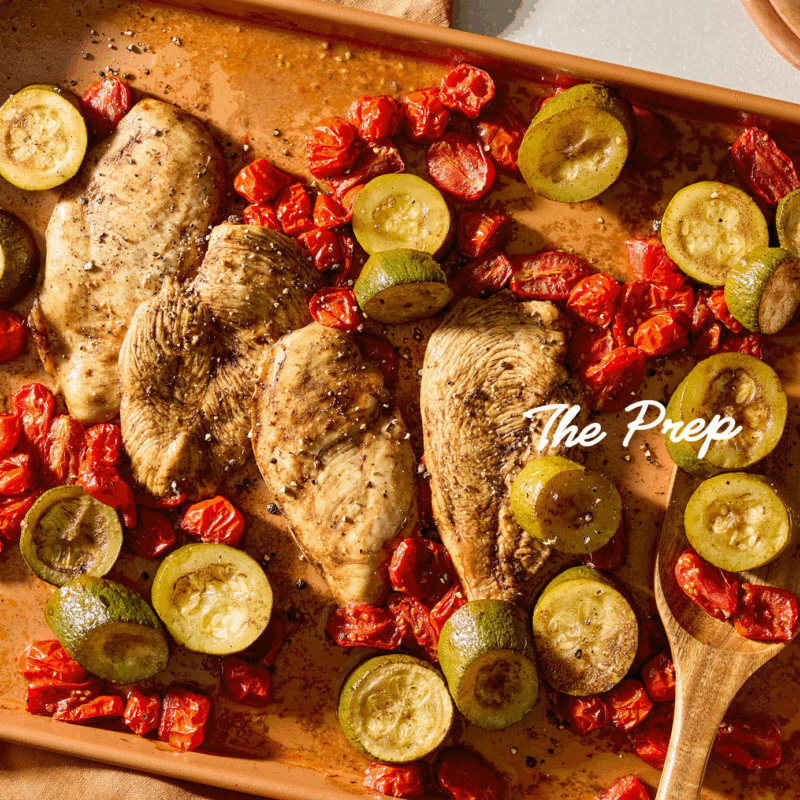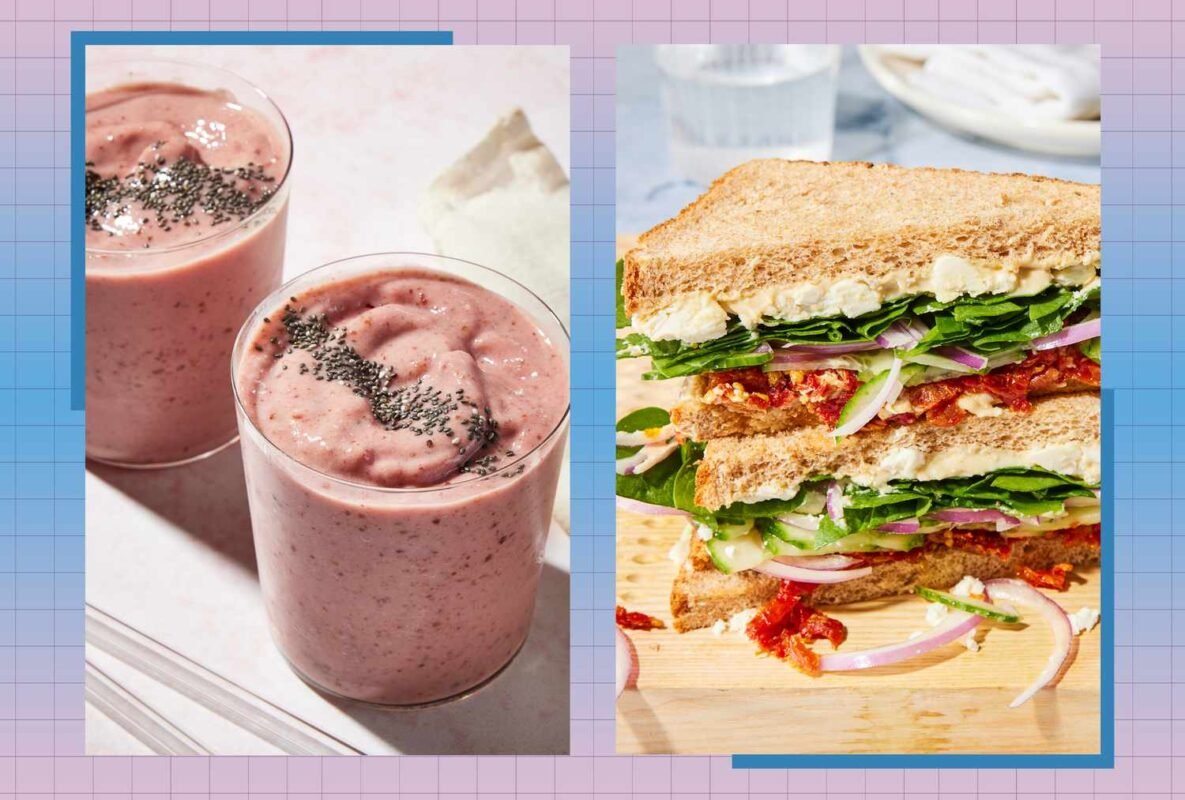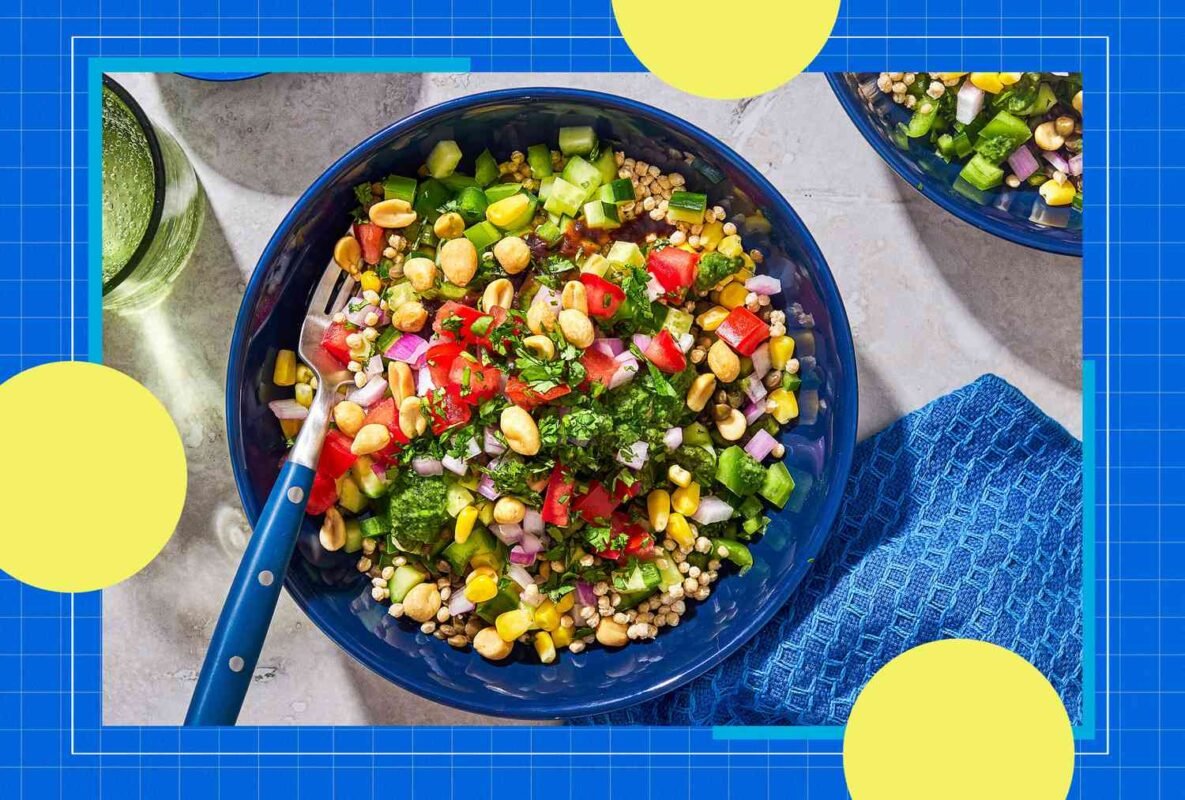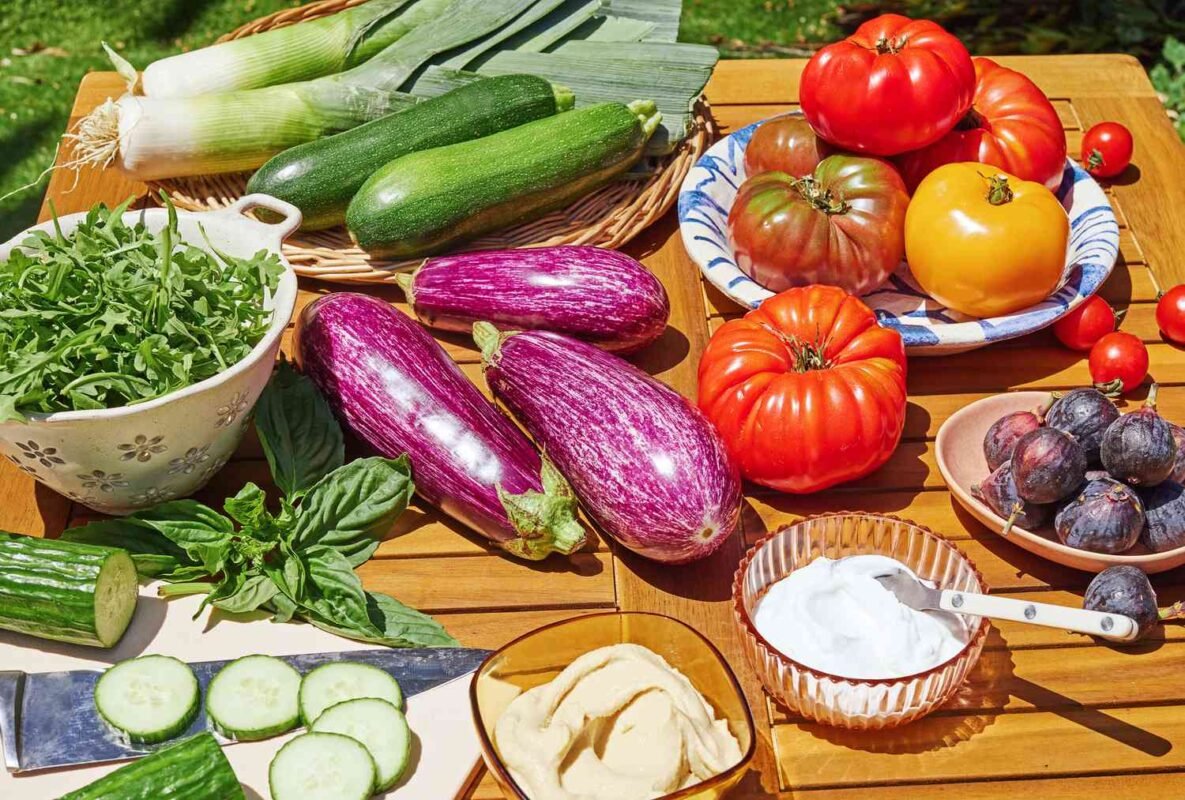Events
The #1 Anti-Inflammatory Diet Habit You Should Start
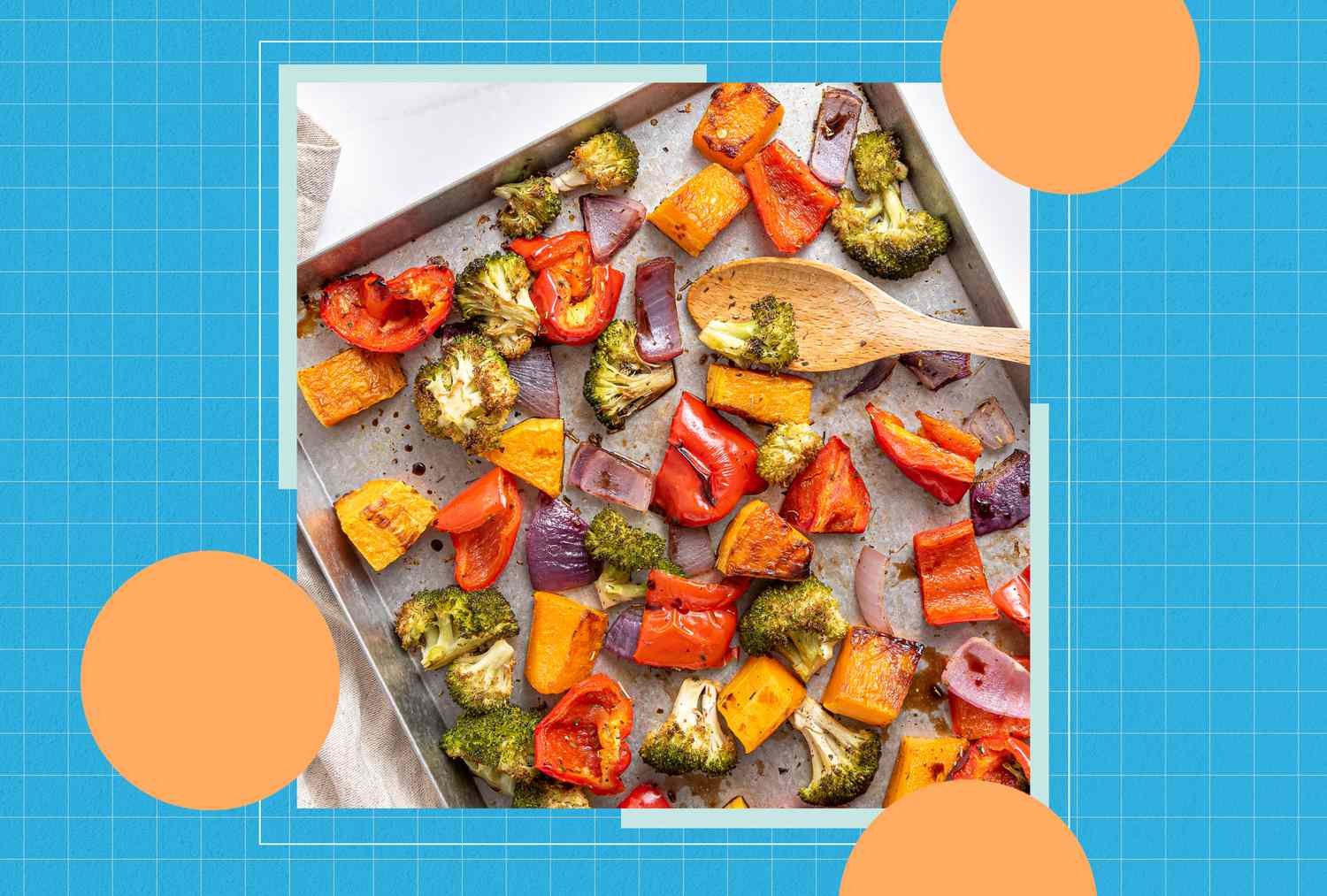
- Eating more colors is a simple and effective way to eat a more anti-inflammatory diet.
- Each color adds a unique mix of phytonutrients, vitamins, minerals and fiber to your diet.
- Adding color is as simple as throwing spinach into a smoothie or having berries for dessert.
If you’re trying to eat a more anti-inflammatory diet to reduce the risk of chronic disease or help manage symptoms of an inflammatory condition, the best place to start may be adding more color to your plate. “An anti-inflammatory diet focuses on colorful, nutrient-dense foods like fruits and vegetables, healthy fats, and inflammation-fighting herbs and spices,” says Julie Pace, RDN. “This pattern of eating can benefit most anyone, but is especially helpful for those managing health conditions such as autoimmune disorders, heart disease, menopause and digestive issues.”,
While there are plenty of anti-inflammatory foods that may not be vibrantly colored, such as nuts, seeds and grains, incorporating a wider range of colors in your diet is an easy and effective way to get started. Eating the rainbow not only makes your food look more appealing, but it effortlessly adds a wide variety of nutrients, antioxidants, and powerful plant compounds to your diet, helping to fight inflammation, support a healthy gut, and keep your immune system strong.
Why Eating More Colors is The Best Habit to Start an Anti-Inflammatory Diet
Vibrant Colors are Rich in Anti-Inflammatory Phytonutrients
“Fruits and vegetables are different colors not just to look nice on our plates, but because each color has different health benefits,” says Marita Radloff, M.S., RDN. Phytonutrients are bioactive compounds found in plants that are responsible for vibrant hues, flavors, and smells, with each color representing a different nutrient with unique benefits.
Anthocyanins are a family of flavonoids responsible for red, pink, blue and purple hues in fruits and vegetables, and they have powerful anti-inflammatory properties. “For example, the deep blue-purple hue of blueberries comes from anthocyanins, natural antioxidants that reduce inflammation and protect your cells from damage,” says Melissa Jaeger, RD, LD.
Carotenoids are another group of colorful phytonutrients, found in yellow and orange fruits and vegetables as well as leafy greens. As a precursor to vitamin A, carotenoids help protect cells and reduce inflammation caused by oxidative damage while also decreasing the production of inflammatory cytokines.
You’ll Eat More Fruits and Vegetables
Data suggests that 85 percent of the United States population is not getting the recommended amount of fruit each day, while 90 percent is falling short on vegetables. Focusing on more color in your diet will naturally help you eat more fruits and veggies, both of which play a significant role in overall health and reducing the risk of inflammatory diseases.
While most research on fruit and vegetable intake and disease prevention is observational, studies repeatedly show a connection between higher intakes and a lower risk of inflammatory chronic diseases, such as metabolic syndrome, type 2 diabetes, osteoporosis, neurodegeneration, and cancer.,
Your Gut Health May Improve
“Fruits and vegetables are rich in fiber, which plays a crucial role in maintaining a healthy gut microbiome. A balanced microbiome supports the body’s immune system and has been linked to a reduced risk of chronic inflammatory diseases,” says Jaegar.
As fiber is fermented by the bacteria in your gut, inflammation-fighting short-chain fatty acids are produced. Butyrate, a particularly beneficial short-chain fatty acid, provides energy to the cells in the gut lining, helping to strengthen its integrity and keeping inflammatory substances from leaking out of the gut into the rest of the body.
You’ll Get a Wide Range of Micronutrients
Numerous vitamins and minerals, including vitamins A, D, C, E, B6, zinc, iron, copper, selenium, and magnesium, play key roles in combating inflammation.
While you could take a supplement to boost your micronutrient intake, it probably won’t have the same powerful anti-inflammatory effect as getting them from your diet. Research suggests that various compounds found in plants activate and intensify the inflammation-fighting power of various vitamins and minerals. For example, resveratrol, a polyphenol found in cranberries, blueberries, and plums, has anti-inflammatory and antipoxidant effects, and also acts synergistically with vitamins A and C.
Other Tips for Following an Anti-Inflammatory Diet
Aside from adding the rainbow to your plate, here are some other simple and effective ways to get more anti-inflammatory foods into your diet:
- Use more herbs and spices: “Try adding a dash of turmeric to salad dressings, sprinkle cardamom over berries, or mix in parsley and oregano into your favorite dishes. These small additions to your meals can make a significant difference when it comes to fighting inflammation,” says Pace.
- Stock your freezer: Fresh isn’t always best, especially when it comes to keeping nutrients intact. “Frozen foods are often picked at the peak of ripeness and can be very convenient since they’re already cut and you can pop them into the microwave to round out the colors on your plate,” says Radloff.
- Increase your colors one by one: If you’re barely getting one serving of fruits or vegetables per day, don’t overcomplicate it by adding too many at once. “Set a goal to include at least one additional serving of fruits or vegetables in your diet each day,” says Jaeger.
- Get inspired by the Mediterranean diet: If you’d rather have a guideline to follow than just picking up more fruits and vegetables from the grocery store, following a simple Mediterranean meal plan can help.
Our Expert Take
Eating more colors is a simple and effective way to eat a more anti-inflammatory diet, without overhauling your entire routine. Each color adds a unique mix of phytonutrients, vitamins, minerals and fiber to your diet to support your body’s natural inflammation-fighting abilities. Additions as simple as blueberries and green spinach in your smoothie, red peppers with your snack, sweet potatoes for dinner, and blackberries in dessert can help you enjoy the benefits and incredible flavors of a more colorful diet.

